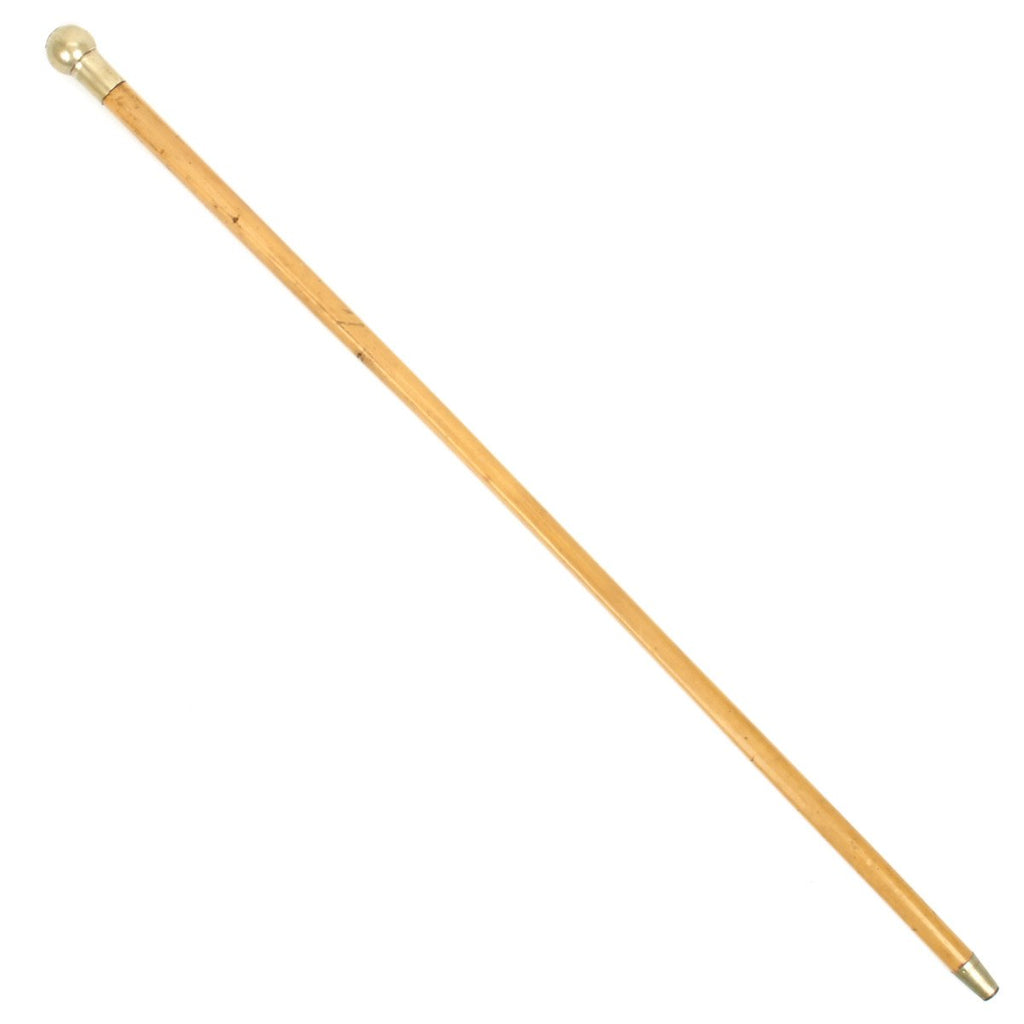Item Description
Original Item: Only One Available. A Pace stick or Sergeant’s stick is a larger version of a swagger stick usually carried by warrant officers and non-commissioned officer drill instructors.
Otherwise, while on parade or when marching, it is normally carried tucked tightly under the left arm and parallel to the ground, with the left hand grasping the stick near the top.
The pace stick is usually permitted to be carried off the parade ground by the regimental sergeant major alone; however, at a particular regiment's discretion, other sergeants and sergeants-major or equivalent may carry a pace stick if they are qualified drill instructors.
The origin of the pace stick is claimed by the Royal Regiment of Artillery, who used a "gunner's stick" to measure the distance between guns in the field. It appeared more like a walking stick, with an ivory or silver knob on the end, and, unlike the modern pace stick, could only be opened a fixed distance. It was quickly adopted and adapted by the Infantry as an aid to drill.
Another stick carried by soldiers is the drill cane, regimental stick or swagger stick. This is a shorter cane, with polished metal ends.
This fine example dates from anywhere between from 1885 to the First World War. It measures 39" overall length and has a silver plated ball to the top bearing an embossed badge of:
The Queen's Royal Regiment West Surrey
This is one of the oldest Regiments in the British Army, having been raised on Putney Heath, now part of South London, in 1661, and it still exists today. Its battle honors are many and it has served throughout the Empire over 350 years.
This sergeant's stick is made from high quality MALACCA cane with silver plated mounts both top and bottom. Far and away rarer than any swagger stick these are always hard to find.
Offered in fine condition.







